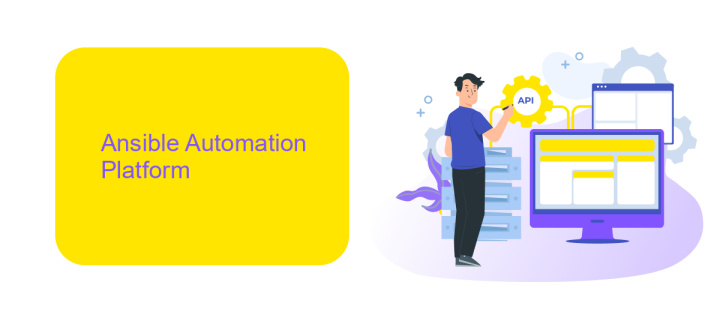Ansible Automation Platform vs AWX
The Ansible Automation Platform and AWX are two pivotal tools in the realm of IT automation, each offering unique capabilities and benefits. While both are rooted in Ansible's powerful automation engine, they cater to different user needs and organizational scales. This article delves into their key differences, strengths, and ideal use cases, helping you make an informed decision on which platform best suits your automation requirements.
Introduction
In the rapidly evolving world of IT automation, two significant players have emerged to streamline processes and enhance efficiency: Ansible Automation Platform and AWX. Both tools are designed to simplify the management of IT environments, yet they cater to different needs and audiences. Understanding the distinctions between these platforms is crucial for organizations aiming to optimize their automation strategies and achieve seamless integration across their infrastructure.
- Ansible Automation Platform: A comprehensive suite designed for enterprise-level automation, offering advanced features, support, and scalability.
- AWX: An open-source project that serves as the upstream community version of Ansible Tower, providing a platform for managing Ansible playbooks and inventories.
Choosing the right tool depends on various factors, including organizational size, budget constraints, and specific automation requirements. Enterprises seeking robust support and advanced features may lean towards the Ansible Automation Platform, while smaller teams or those with a preference for open-source solutions might find AWX more appealing. Ultimately, the decision should align with the organization's strategic goals and technical capabilities, ensuring a tailored approach to automation that drives productivity and innovation.
Ansible Automation Platform

Ansible Automation Platform is a comprehensive suite designed to streamline IT automation processes across diverse environments. It provides a robust foundation for managing configurations, deploying applications, and orchestrating complex workflows. With its intuitive interface and powerful features, organizations can efficiently automate repetitive tasks, reducing time and minimizing human error. The platform supports a wide range of integrations, enabling seamless connectivity with various tools and services, thereby enhancing operational efficiency and consistency.
One of the key advantages of Ansible Automation Platform is its scalability, which allows it to cater to both small teams and large enterprises. It offers extensive support for cloud environments, making it ideal for hybrid and multi-cloud strategies. Additionally, with the help of integration services like ApiX-Drive, users can effortlessly connect Ansible with other applications, ensuring smooth data flow and process automation. This capability not only simplifies workflows but also empowers organizations to adapt quickly to changing business needs, fostering innovation and growth.
AWX

AWX is an open-source community project that serves as the upstream version of the Ansible Automation Platform. It provides a web-based user interface, REST API, and task engine for managing Ansible playbooks and inventories. As a free and open-source tool, AWX allows developers and IT administrators to automate complex tasks without incurring additional costs. It is particularly beneficial for those who want to test and develop automation workflows before deploying them in a production environment.
- AWX is free and open-source, making it accessible to anyone interested in automation.
- It provides a graphical user interface to simplify the management of Ansible playbooks and inventories.
- AWX allows for seamless integration with version control systems like Git, enhancing collaboration.
- It offers a REST API for programmatic interaction, enabling custom integrations and automation.
- Regular updates and community support ensure that AWX evolves to meet user needs.
While AWX is ideal for development and testing, it lacks the enterprise support and scalability features found in the Ansible Automation Platform. Users seeking a robust, supported solution for large-scale deployments may consider transitioning to the enterprise version. However, AWX remains a powerful tool for those who prioritize flexibility and community-driven innovation.
Comparison Table

Ansible Automation Platform and AWX are popular tools for IT automation, each with distinct features and capabilities. Ansible Automation Platform is a comprehensive solution offering enterprise-grade support, scalability, and advanced features for large-scale automation needs. It provides a robust framework for managing complex IT environments, making it ideal for organizations with extensive automation requirements.
AWX, on the other hand, is the open-source upstream project of the Ansible Automation Platform. It serves as a community-driven platform that allows users to experiment with new features and contribute to the development of Ansible's ecosystem. AWX is suitable for small to medium-sized projects or for teams looking to explore Ansible's capabilities without the need for enterprise-level support.
- Cost: Ansible Automation Platform is a paid solution, whereas AWX is free and open-source.
- Support: Ansible Automation Platform offers professional support, while AWX relies on community support.
- Features: The platform includes advanced features not present in AWX, such as analytics and certified content.
- Scalability: Ansible Automation Platform is designed for large-scale deployment, unlike AWX.
In summary, the choice between Ansible Automation Platform and AWX depends on the specific needs of the organization. For enterprises requiring robust support and scalability, Ansible Automation Platform is the preferred choice. However, for smaller teams or those interested in exploring open-source solutions, AWX provides a viable and cost-effective alternative.


Conclusion
In comparing Ansible Automation Platform and AWX, both tools offer robust solutions for IT automation, yet they cater to slightly different needs. Ansible Automation Platform is designed for enterprises seeking a comprehensive and supported automation solution. It provides a rich set of features, including access to Red Hat support, certified content, and advanced analytics, making it ideal for large-scale deployments and complex environments. AWX, on the other hand, serves as a community-driven, open-source alternative that allows users to experiment and customize without the constraints of commercial licensing, making it suitable for smaller teams or those with development expertise.
When it comes to integrating these platforms with other services, tools like ApiX-Drive can simplify the process by automating data transfer between applications. This can enhance workflow efficiency and reduce manual intervention, allowing teams to focus more on strategic tasks. Ultimately, the choice between Ansible Automation Platform and AWX depends on the specific requirements of your organization, including budget, scale, and the need for professional support and additional features. Both platforms offer significant benefits, and the decision should align with your operational goals and resources.
FAQ
What is the main difference between Ansible Automation Platform and AWX?
Can AWX be used for production environments?
How does the pricing model differ between Ansible Automation Platform and AWX?
Can I integrate Ansible Automation Platform and AWX with other tools?
Is there a difference in the installation process for Ansible Automation Platform and AWX?
Apix-Drive will help optimize business processes, save you from a lot of routine tasks and unnecessary costs for automation, attracting additional specialists. Try setting up a free test connection with ApiX-Drive and see for yourself. Now you have to think about where to invest the freed time and money!

